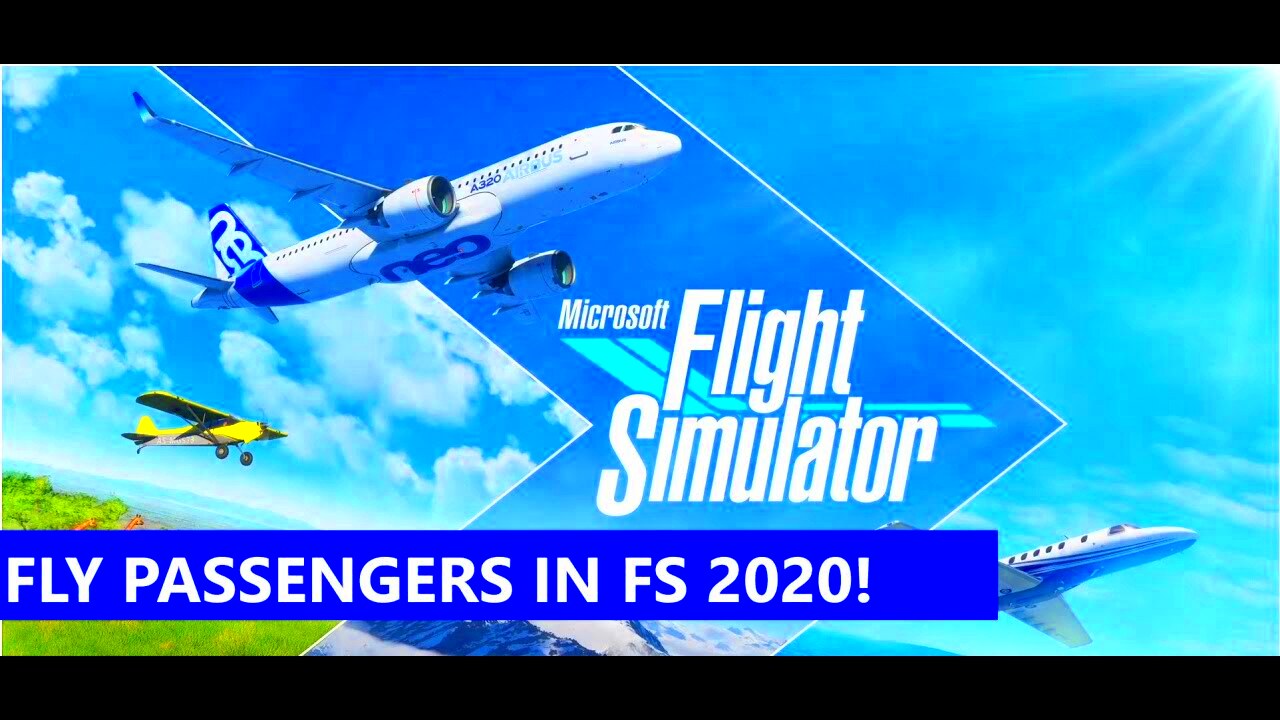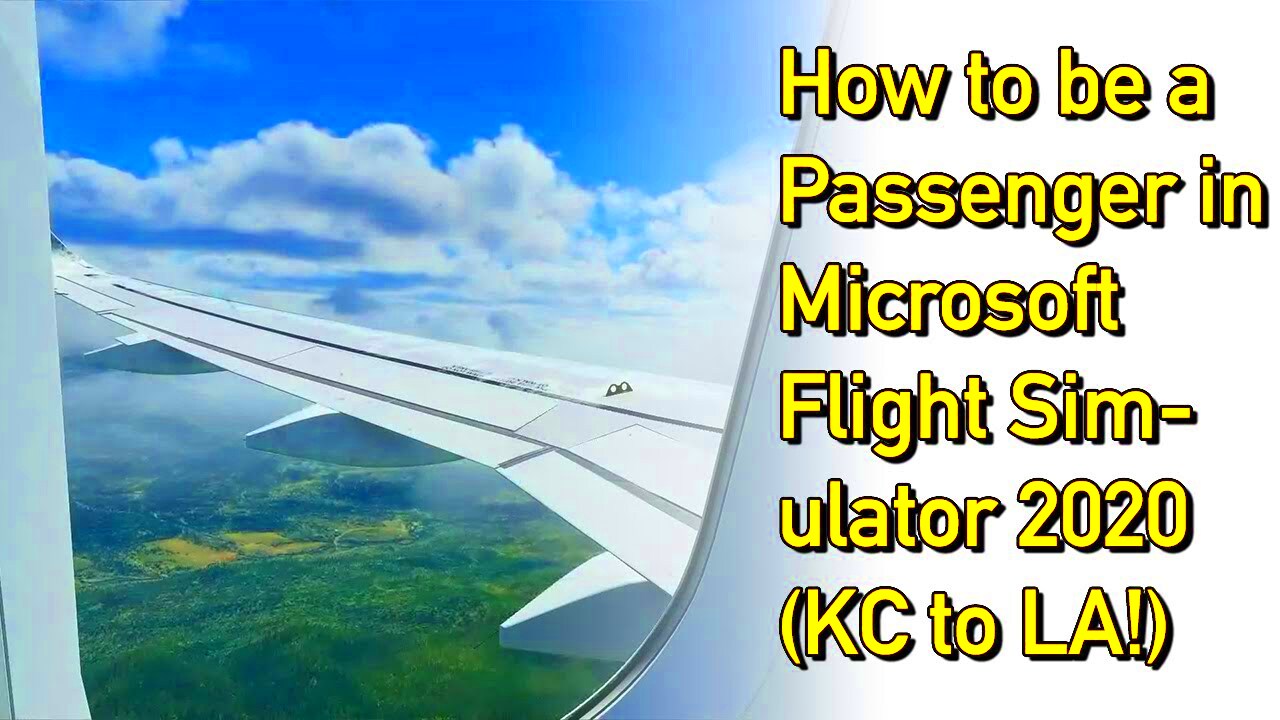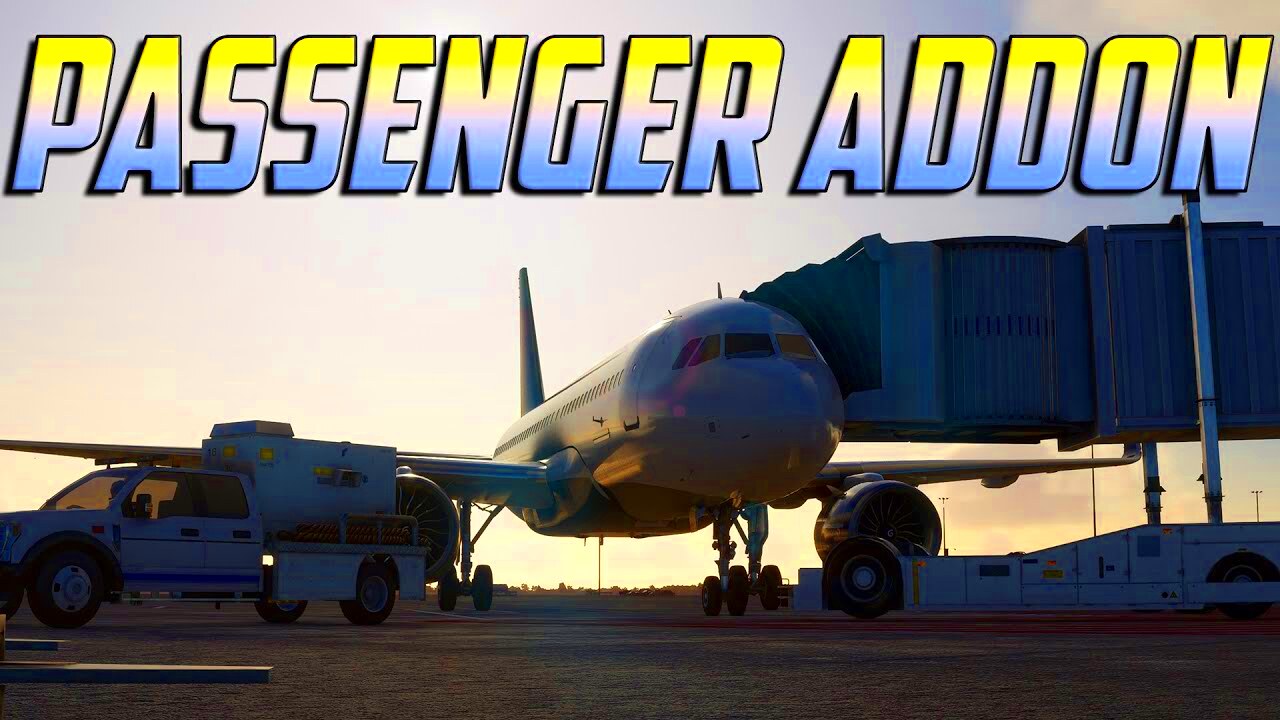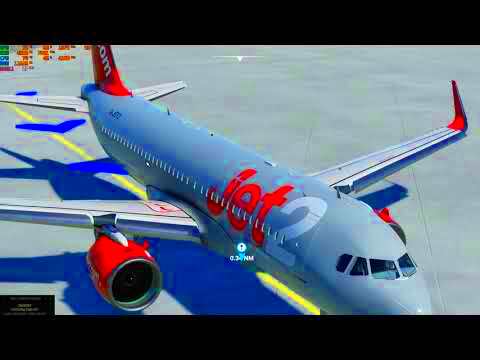Introduction to Microsoft Flight Simulator
If you're a fan of aviation or just love the thrill of piloting an aircraft,
Microsoft Flight Simulator is a game-changer. It's not just about flying from point A to point B; it's about experiencing every nuance of the aviation world. From the moment you start up the simulator, you're transported into a world where the skies are your playground, and every detail has been meticulously crafted to offer an authentic flying experience. Whether you're a seasoned pilot or a curious newbie, this simulator promises to capture your imagination and keep you soaring high.
The Joy of Virtual Flying

There's something undeniably exhilarating about virtual flying that you just can't match with any other experience. Picture this: you’re sitting comfortably at home, yet you're soaring through the skies, feeling the rush of air and seeing the world from thousands of feet up. It’s a blend of realism and fantasy that makes you feel like you're truly in control of a massive aircraft.One of my favorite moments was taking off from a snow-covered runway in Alaska. The way the simulator replicates the icy conditions, the rumble of the engines, and the vast, white expanse outside the window made me feel like I was right there in the cockpit. And let's not forget the breathtaking sunsets and the serene night flights. Each moment in the simulator offers a new adventure, and it’s this constant variety that keeps you coming back for more.
Why Passengers Matter in Flight Simulation

Adding passengers to your flight simulation experience might seem like a small detail, but it can make a huge difference. It’s not just about having a few extra characters in the cabin; it's about creating a more immersive and realistic flying experience. When you have passengers on board, it feels like there's a real mission behind your flight. You’re not just flying for the sake of flying; you’re transporting people, and that adds a layer of responsibility and excitement.
Here's why passengers matter:
- Realism: Passengers contribute to the authenticity of your flights. Their presence makes the cockpit feel like a true flight environment.
- Engagement: With passengers on board, every flight becomes a story. Are you flying a commercial route with dozens of travelers, or just a private charter with a few guests?
- Challenges: Managing passengers adds another layer of complexity. You might have to consider in-flight announcements or handle unexpected situations.
For me, adding passengers brought a new level of enjoyment. I remember my first long-haul flight with a cabin full of simulated passengers. The sense of duty I felt to ensure their safety and comfort made every decision on that flight more meaningful. It’s these small details that transform a good simulation into a truly memorable experience.
Getting Started: Setting Up Your Simulator

Getting your
Microsoft Flight Simulator up and running is like prepping for a grand adventure. The setup process might seem a bit daunting at first, but once you’ve got everything in place, the skies are yours to explore. I remember my first setup vividly. I spent hours tweaking settings, calibrating controls, and making sure everything was just right. It felt like setting up a high-tech cockpit right in my living room.
Here’s a quick guide to get you started:
- System Requirements: Ensure your PC meets or exceeds the recommended specifications. Microsoft Flight Simulator is a powerhouse, so a good graphics card and plenty of RAM are essential.
- Install the Simulator: Follow the installation instructions carefully. You might need to download additional files or updates, so be patient and let everything install fully.
- Configure Your Controls: Whether you’re using a joystick, yoke, or keyboard, take the time to calibrate your controls. This step is crucial for a smooth flying experience.
- Adjust Settings: Play around with the graphics and control settings to find the balance between performance and visual quality. I found that a bit of tweaking made a huge difference in how immersive the experience felt.
Once you’ve completed these steps, you’re ready to hit the skies. The initial setup might take some time, but trust me, the effort is worth it. The thrill of flying with a well-tuned simulator makes all the setup work fade into the background.
Adding Passengers: Tools and Tips
Bringing passengers into your
Microsoft Flight Simulator experience adds a whole new dimension to your flights. It’s like adding extra characters to a movie scene; they help fill out the story and make the experience feel more complete. When I first started incorporating passengers, it felt like the final piece to a puzzle I didn’t know was missing.
Here’s how to get started:
- Passenger Add-ons: Look for third-party add-ons or mods that introduce passengers into the cabin. Websites like the Microsoft Flight Simulator Marketplace or community forums can be great resources.
- Cabin Crew Plugins: Some plugins not only add passengers but also provide interactive features like cabin announcements and service options. These can really enhance your flight’s realism.
- Custom Scenarios: Create or download scenarios where passengers are a key part of the experience. You might find scenarios with emergency situations or special flight missions that include passenger interactions.
Adding passengers is more than just a visual enhancement. It changes how you approach your flights, turning each journey into a more engaging and responsible experience. The first time I flew with passengers on board, I felt a new level of immersion. It’s amazing how a few extra details can make such a big difference.
Enhancing Realism with Passenger Details
Once you’ve got passengers in your simulator, the next step is to make them as realistic as possible. The goal is to create an environment where every detail feels authentic, from the look of the passengers to the interactions you have with them. This is where the magic of simulation truly shines.
Here are some ways to enhance passenger realism:
- Detailed Models: Invest in add-ons or mods that provide detailed passenger models. These should include diverse appearances and realistic animations.
- In-Flight Services: Simulate in-flight services like food and beverage offerings. Some advanced mods allow you to interact with passengers and manage their comfort.
- Passenger Behavior: Look for add-ons that simulate passenger behavior, such as boarding procedures, in-flight movements, and even reactions to turbulence.
- Cabin Sounds: Incorporate realistic cabin sounds, such as chatter, seatbelt signs, and background noise. It adds to the immersion and makes you feel like you’re really in a busy aircraft.
For instance, I recently installed a mod that added realistic passenger reactions during turbulence. Hearing them gasp or move around during bumpy flights really made the experience more lifelike. These details might seem small, but they collectively create a more immersive flying environment. The extra effort to fine-tune these aspects turns a good simulation into a fantastic one, where every flight feels like a true adventure.
Common Challenges and Troubleshooting
Even with the most advanced flight simulators, you’re bound to encounter a few bumps along the way. When I first dove into
Microsoft Flight Simulator, I faced my fair share of challenges—everything from graphical glitches to control issues. But don’t worry; troubleshooting these problems often leads to quick fixes and improved experiences. Think of it as a rite of passage into the world of aviation simulation.
Here are some common issues and their solutions:
- Performance Issues: If you’re experiencing lag or low frame rates, try lowering your graphics settings or updating your graphics drivers. Also, check if other background applications are using up system resources.
- Control Problems: If your controls aren’t responding as expected, ensure they are properly calibrated. You might need to adjust the sensitivity settings in the simulator's control panel.
- Software Crashes: Frequent crashes can be frustrating. Make sure your game and all related drivers are updated. Sometimes, clearing the cache or reinstalling the simulator can resolve persistent issues.
- Connectivity Issues: For those using online features, a stable internet connection is crucial. If you’re having trouble connecting, check your network settings and ensure that your firewall isn’t blocking the game.
Remember, every challenge is a learning opportunity. I once spent an entire evening figuring out why my controls weren’t syncing. It turned out to be a simple calibration issue, but the satisfaction of solving it made the experience even more rewarding.
Sharing Your Flight Experience
One of the best parts of flight simulation is sharing your experiences with others. Whether you’re swapping stories with friends or showcasing your flights online, it’s a great way to connect with fellow aviation enthusiasts and get feedback.
Here’s how you can share your flights:
- Social Media: Post screenshots or videos of your flights on platforms like Instagram or Twitter. Use hashtags like #FlightSimulator or #VirtualPilot to reach a broader audience.
- Flight Simulation Forums: Join forums or online communities dedicated to flight simulation. Share your experiences, ask for advice, and engage in discussions with other sim pilots.
- Live Streaming: Consider live streaming your flights on platforms like Twitch or YouTube. This allows you to interact with viewers in real-time and show off your flying skills.
- Flight Logs: Maintain a flight log or blog where you document your flights, share insights, and post tips. It’s a great way to reflect on your experiences and help others in the community.
I remember my first live stream; it was exhilarating to share my flight in real-time with an audience. The feedback and camaraderie made the experience even more enjoyable. Sharing your passion for flight simulation can open doors to new friendships and opportunities in the aviation community.
FAQ
Q: What do I need to run Microsoft Flight Simulator smoothly?
A: To enjoy a smooth experience, ensure your PC meets or exceeds the game’s recommended system requirements. A high-performance graphics card, plenty of RAM, and a fast processor are crucial. Also, keep your drivers up to date.
Q: Can I use my existing flight gear with Microsoft Flight Simulator?
A: Yes, most flight controllers, joysticks, and yokes are compatible with
Microsoft Flight Simulator. Just make sure they’re properly calibrated and that you’ve installed any necessary drivers or software.
Q: How do I add passengers to my flights?
A: You can add passengers by using third-party add-ons or mods available from various flight simulation communities or marketplaces. Some of these add-ons come with interactive features and realistic passenger behavior.
Q: What should I do if I encounter technical issues?
A: Start by checking for updates for the simulator and your hardware drivers. If issues persist, consult online forums or support resources for troubleshooting advice. Sometimes, reinstalling the simulator can help resolve persistent problems.
Q: How can I improve the realism of my flight experience?
A: Enhancing realism can be achieved by using high-quality add-ons for scenery, aircraft, and weather. Adjusting your simulator’s settings for optimal graphics and incorporating realistic cabin sounds and passenger interactions also helps create a more immersive experience.
Conclusion
Flying with Microsoft Flight Simulator isn't just about navigating through virtual skies; it's about immersing yourself in an experience that mirrors real-world aviation with incredible detail. From setting up your simulator and adding passengers to troubleshooting common issues and sharing your adventures, each step enhances your connection to the art of flying. As I look back on my journey with the simulator, I’m reminded of the countless hours spent perfecting my virtual flights and the joy that came from overcoming challenges and discovering new aspects of the aviation world.The beauty of flight simulation lies in its ability to make every flight unique. Whether you're embarking on a challenging approach into a stormy airport or simply cruising over picturesque landscapes, each flight offers new experiences and opportunities for learning. Sharing these experiences with a community of like-minded enthusiasts adds another layer of enjoyment, as you exchange stories, tips, and techniques.So, as you set your course for your next virtual adventure, remember that the joy of flight simulation comes from both the journey and the destination. Embrace the challenges, celebrate the victories, and continue exploring the boundless skies of Microsoft Flight Simulator. Your cockpit is waiting, and the world is yours to discover.
 There's something undeniably exhilarating about virtual flying that you just can't match with any other experience. Picture this: you’re sitting comfortably at home, yet you're soaring through the skies, feeling the rush of air and seeing the world from thousands of feet up. It’s a blend of realism and fantasy that makes you feel like you're truly in control of a massive aircraft.One of my favorite moments was taking off from a snow-covered runway in Alaska. The way the simulator replicates the icy conditions, the rumble of the engines, and the vast, white expanse outside the window made me feel like I was right there in the cockpit. And let's not forget the breathtaking sunsets and the serene night flights. Each moment in the simulator offers a new adventure, and it’s this constant variety that keeps you coming back for more.
There's something undeniably exhilarating about virtual flying that you just can't match with any other experience. Picture this: you’re sitting comfortably at home, yet you're soaring through the skies, feeling the rush of air and seeing the world from thousands of feet up. It’s a blend of realism and fantasy that makes you feel like you're truly in control of a massive aircraft.One of my favorite moments was taking off from a snow-covered runway in Alaska. The way the simulator replicates the icy conditions, the rumble of the engines, and the vast, white expanse outside the window made me feel like I was right there in the cockpit. And let's not forget the breathtaking sunsets and the serene night flights. Each moment in the simulator offers a new adventure, and it’s this constant variety that keeps you coming back for more. Adding passengers to your flight simulation experience might seem like a small detail, but it can make a huge difference. It’s not just about having a few extra characters in the cabin; it's about creating a more immersive and realistic flying experience. When you have passengers on board, it feels like there's a real mission behind your flight. You’re not just flying for the sake of flying; you’re transporting people, and that adds a layer of responsibility and excitement.
Adding passengers to your flight simulation experience might seem like a small detail, but it can make a huge difference. It’s not just about having a few extra characters in the cabin; it's about creating a more immersive and realistic flying experience. When you have passengers on board, it feels like there's a real mission behind your flight. You’re not just flying for the sake of flying; you’re transporting people, and that adds a layer of responsibility and excitement. Getting your Microsoft Flight Simulator up and running is like prepping for a grand adventure. The setup process might seem a bit daunting at first, but once you’ve got everything in place, the skies are yours to explore. I remember my first setup vividly. I spent hours tweaking settings, calibrating controls, and making sure everything was just right. It felt like setting up a high-tech cockpit right in my living room.
Getting your Microsoft Flight Simulator up and running is like prepping for a grand adventure. The setup process might seem a bit daunting at first, but once you’ve got everything in place, the skies are yours to explore. I remember my first setup vividly. I spent hours tweaking settings, calibrating controls, and making sure everything was just right. It felt like setting up a high-tech cockpit right in my living room.
 admin
admin








